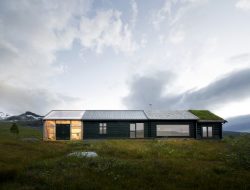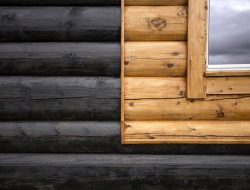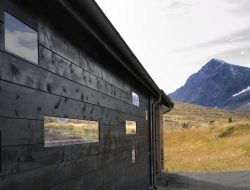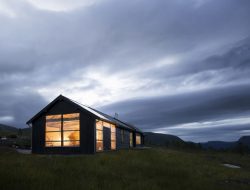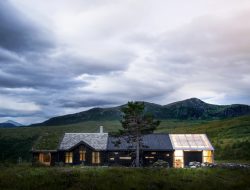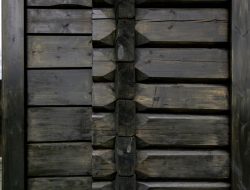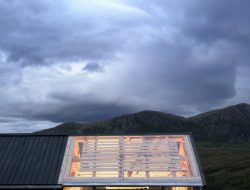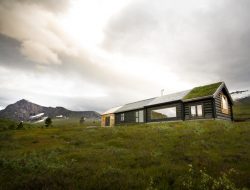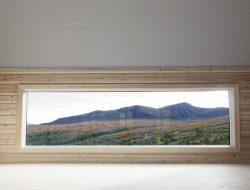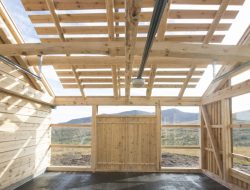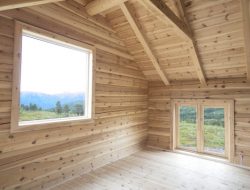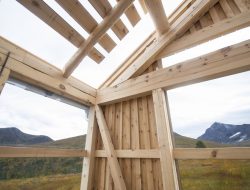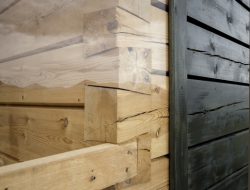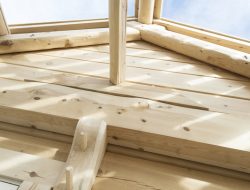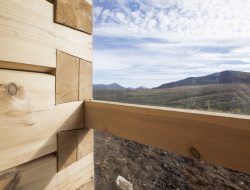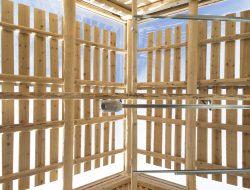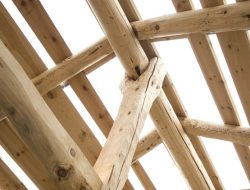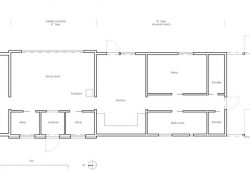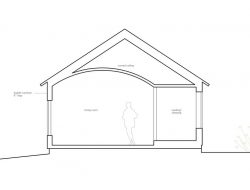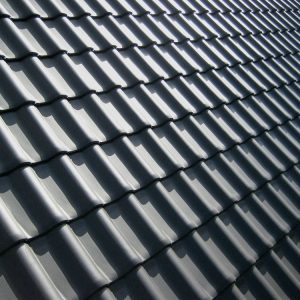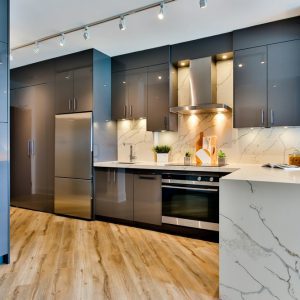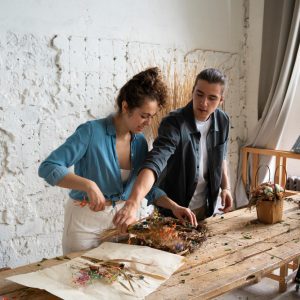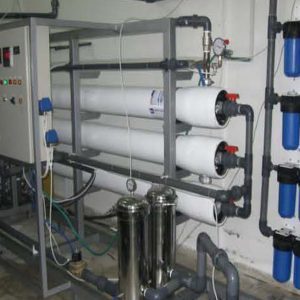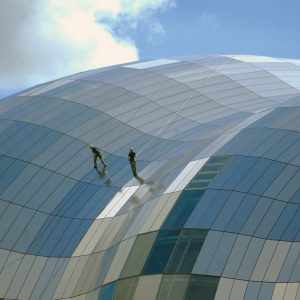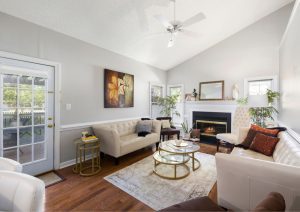Contents
Sunndal, Norway – Rever & Drage Architects
Built area: 140.0 m2
Year built: 2017
Photographs: Tom Auger
Troll’s Peak cabin is patterned after the traditional row farm. It’s a long rectangular box divided into four sections, each section constructed using a different technique. As a result, the cabin looks like four individual buildings sitting close together.
This mountain cabin was designed for an active family whose passions include skiing and hiking. A key aspect to the design was to ensure the structure’s strength, enough to withstand harsh climates.
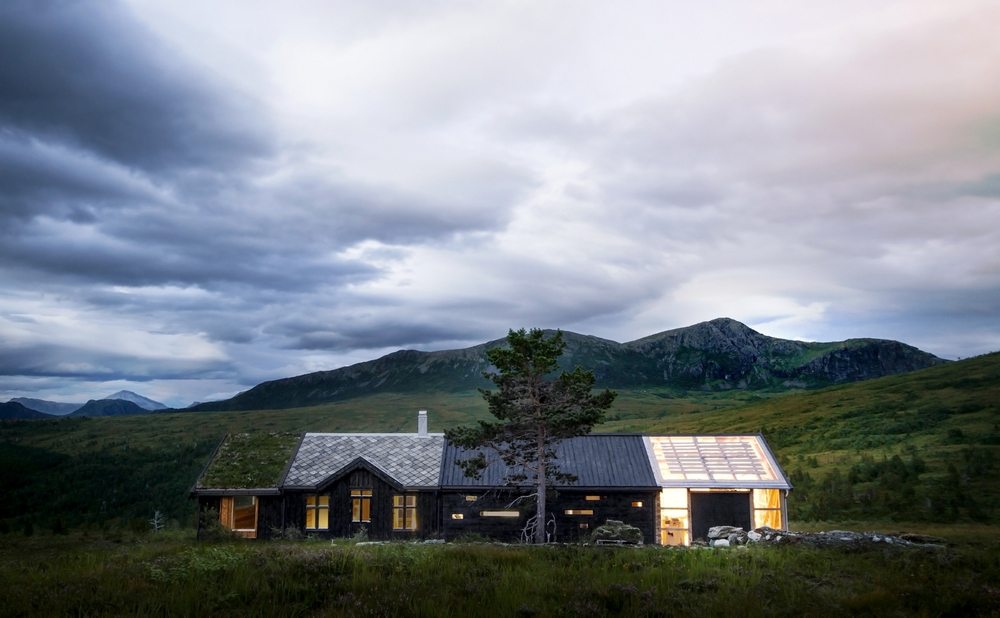
Inside, the cabin is arranged into four sequences, each representing a different living space. A timber-bordered garage covered in transparent polycarbonate serves as one entry point. This is where the skiers and hikers leave their gears before entering the home.
Moving on, they pass by the kitchen and laundry area. The next section houses the bedrooms and a large bath. The main living area has a huge picture window that provides sweeping views of mountain valley.
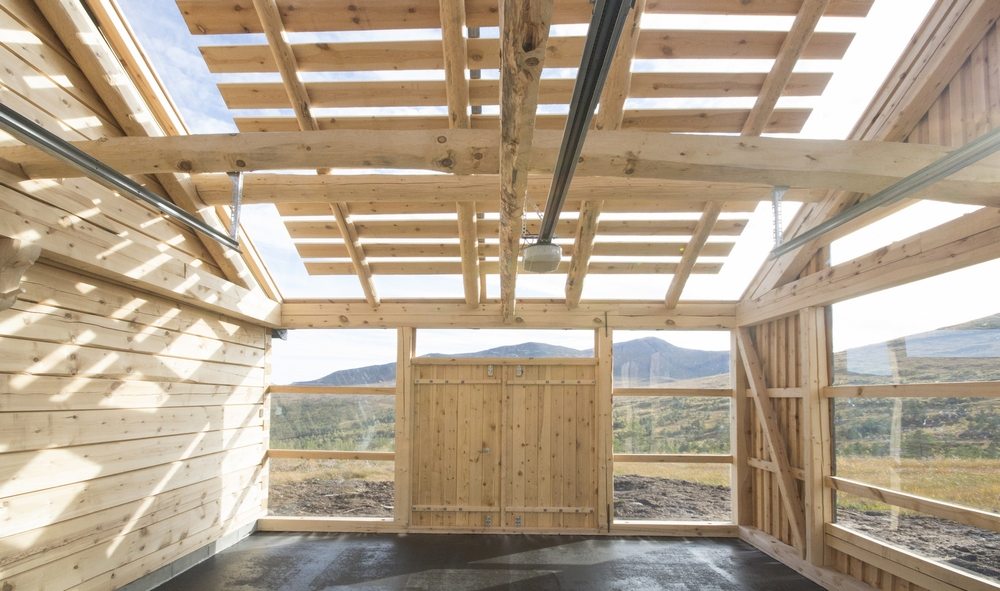
The cabin’s design ranges from the late medieval architecture to the use of modern dovetail notches. All in all, Troll’s Peak cabin is aesthetics, strength, warmth, and function rolled into one.
Notes from the Architect:
This is first and foremost a robust heavy duty cabin with high-quality traditional craftsmanship and local timber being used throughout. It uses a traditional layout with a connecting row of different buildings styles and with materials and techniques corresponding to the different indoor functions, the weather conditions they must handle as well as their representative status. The choice of durable materials and a construction to fit the terrain will give the cabin a long life, even in the harsh weather conditions of this high mountain valley. The cabin is practically designed for an active outdoor family with a lot of equipment and the need for a comfortable place to change before and after hiking and skiing trips and not the least to provide a drying area for wet clothes. The building is further tailor-made to transport wet hikers from the glassed-in garage via a laundry area, bathroom and kitchen to a soft sofa by the fireplace with a wide panorama window.
The glassed-in garage will also function as a storage room, fitness/workout room, workshop and conservatory. In this room, all the traditional wooden joints are exposed and well lit. From the conservatory, the nearby scenic peak of Ryssdalsnebba can be observed to the south. In good weather, the doors can be opened both to the west and east to make a seamless transition between the safe shelter of the cabin and the wilderness at the doorstep. To the north is a large bedroom, or small dormitory, with a large window in the gables to observe the northern lights.
The living room has a barrel vault ceiling which defines a distinct scene with the fireplace and panorama window underneath. The low position of the window emphasizes that this is a room to sit and relax. Adjacent to the living room are two small rooms which can function either as an extra bedroom or workplace. Between the two small rooms is a representative entrance with a gable fronted dormer to indicate that this is the entrance for visitors as opposed to the more profane entrance through the garage. The kitchen is airy and comfortable with a dining table and terrace door to the east. To the west small windows are recessed in the timber to provide daylight as well as a view of the driveway. The bathroom has the same type of recessed windows to allow daylight and afternoon sun in, but without being too exposed.
The outside composition is that of a traditional row farm (cluster farm) where buildings with different functions and different construction techniques are arranged in a line corresponding with the dominant direction of the wind. The obligation to the whole is maintained by common colouration in a deep, dark green, tar based timber oil, as well as the common direction of their gabled roofs. At the same time, each of the units has its own character as presented by their building technique and window type. Furthest north the notching technique is late medieval with large, narrowing logs. The living room is built with more elegant 19th century notched logs, while the kitchen has slim, more modern, square logs with dovetail notches. Furthest south is the garage, built in a local timber frame technique and clad with transparent polycarbonate. In the western facade of the building, the individual characters of the different units are most obvious, while in the eastern facade their coherence and the cabin as a whole is more prominent. The cabin is in this respect can be seen as both a single unit and four separate buildings.
Click on any image to start lightbox display. Use your Esc key to close the lightbox. You can also view the images as a slideshow if you prefer. ?
Exterior Views:
Interior Views:
Drawing Views:
The Pine Forest cabin is another piece of architecture you’ll surely like.


